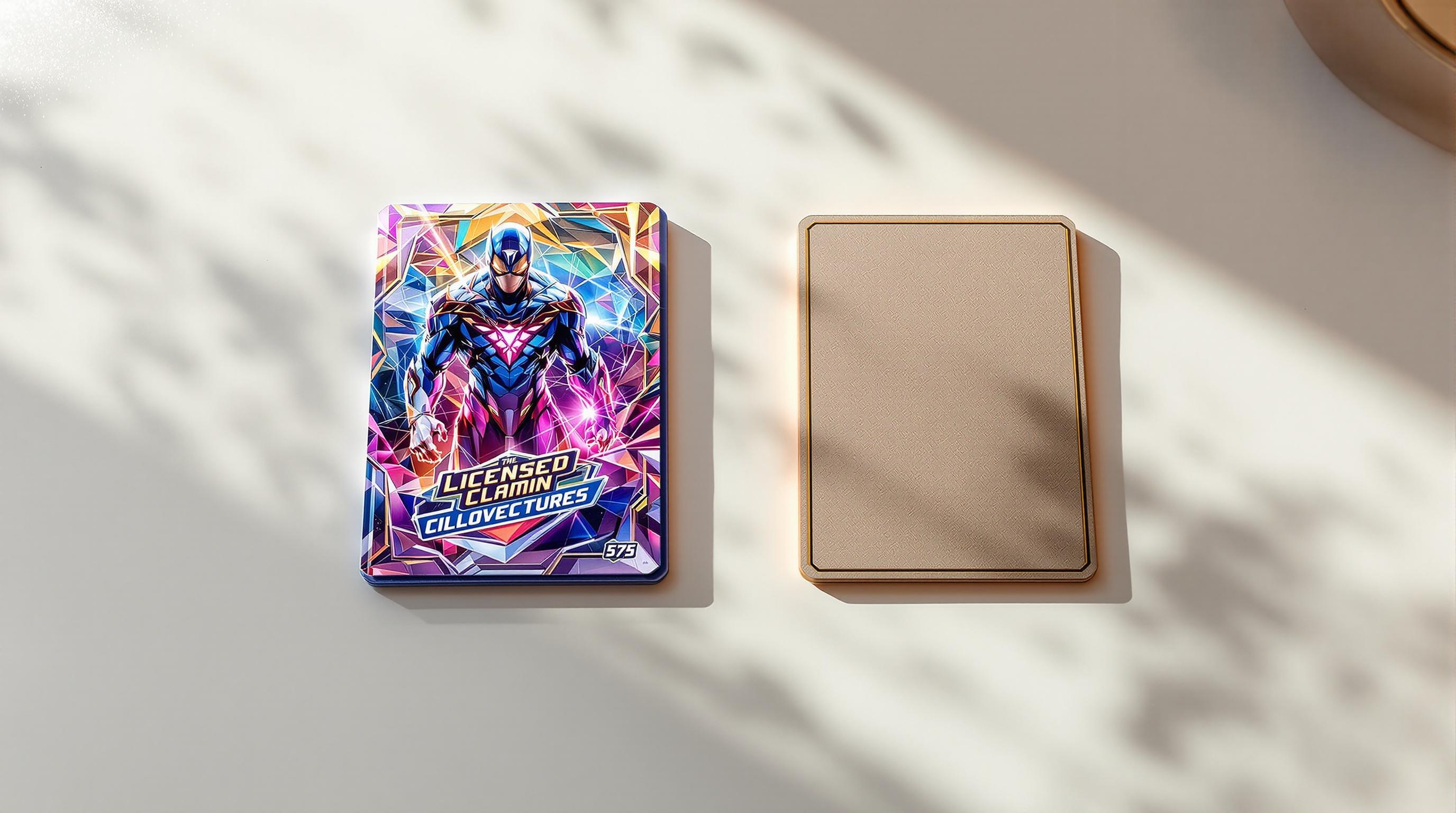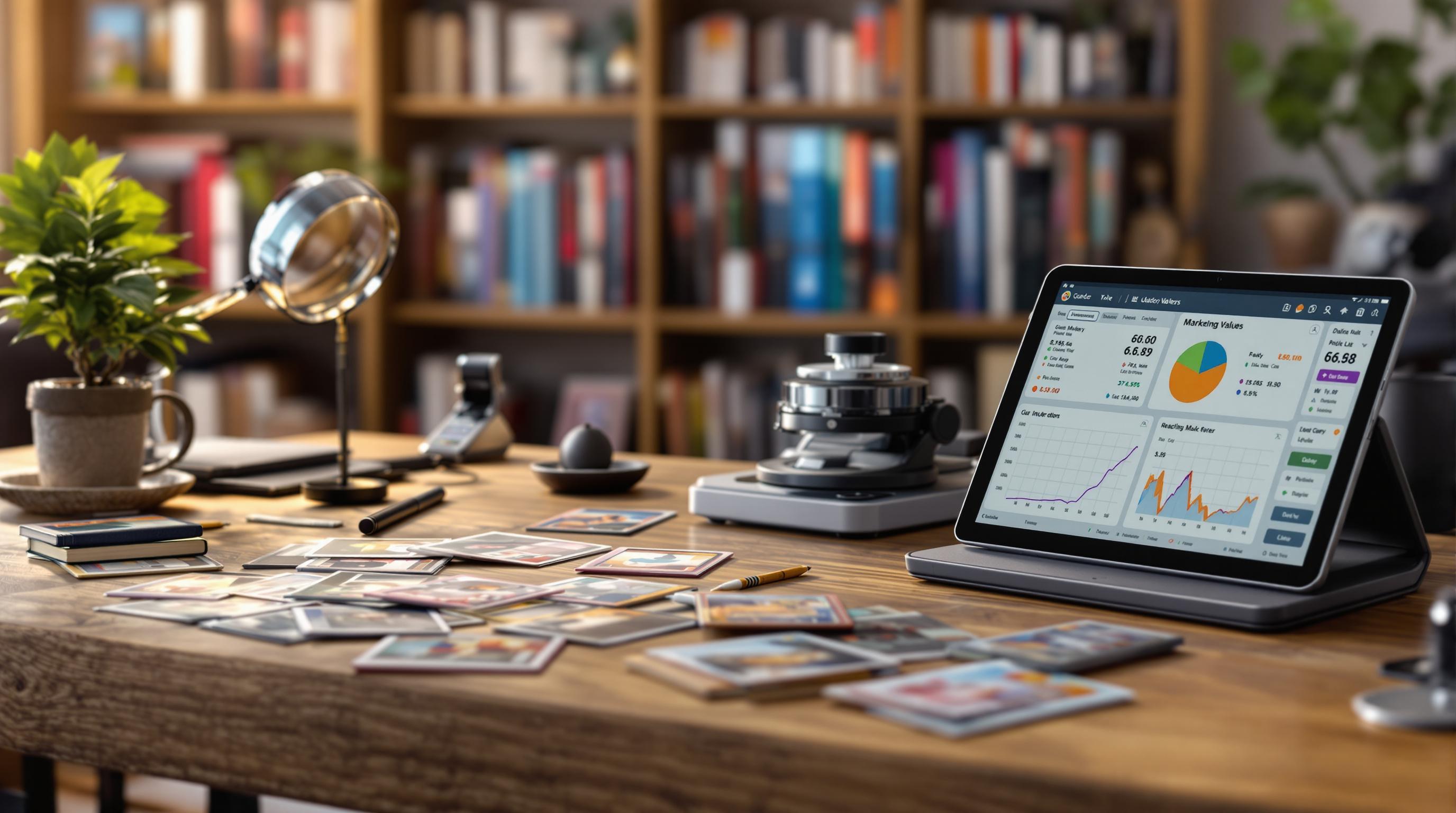During the COVID-19 pandemic, Pokémon cards became a global sensation. Here's why:
- Nostalgia and Free Time: Millennials revisited childhood hobbies, fueled by lockdowns and extra cash from stimulus checks.
- Skyrocketing Prices: Rare cards saw massive value increases, with some sealed booster packs selling for over $360,000.
- Social Media and Influencers: Platforms like TikTok and influencers like Logan Paul drove interest, sparking an 800% rise in card values.
- Local Shops Thrived: Pokémon-related products accounted for 80% of sales in some stores, reshaping the trading card market.
The surge was driven by a mix of nostalgia, investment interest, and social media hype, but also created challenges like higher prices and product shortages. While the market is stabilizing, collectors are now focusing more on card condition, authenticity, and long-term value.
Reasons for the Pokémon Card Boom During the Pandemic

Rediscovering Childhood Passions
The pandemic created an ideal setting for many Millennials to revisit hobbies from their youth. With lockdowns limiting activities and stimulus checks providing extra cash, people in their late twenties and thirties found themselves diving back into Pokémon card collecting [1][4]. This group, now financially stable, could finally afford the cards they once dreamed of owning as kids [5]. This wave of nostalgia played a big role in driving up demand for collectible and rare cards.
Skyrocketing Demand for Rare Cards
The value of rare Pokémon cards, especially first-generation ones, soared during the pandemic. For example, 1st Edition Team Rocket packs jumped in price from $75 to $300-$400 - a staggering ~433% increase. Even common cards saw their worth grow as both casual collectors and serious investors flooded the market [2]. Local card shops saw a massive boost in business, with some reporting that Pokémon-related sales made up 80% of their revenue during this time [5].
Social Media and Celebrity Influence
Social media and celebrity endorsements took the Pokémon card craze to a whole new level. Influencers like Logan Paul played a major role, with his $150,000 purchase of a first-edition Charizard sparking an 800% increase in the value of similar cards within a year [3].
"Prices for some cards will rise, but not all, which some collectors overlook", said Caitlin Sidhu, a 26-year-old collector [5].
Platforms like YouTube and Instagram exploded with content featuring rare card reveals and pack openings. These posts not only introduced the hobby to younger audiences but also reignited interest among older collectors [1]. This mix of nostalgia, scarcity, and influencer-driven hype turned Pokémon cards into a cultural phenomenon. To navigate the growing market and avoid counterfeit cards, many collectors relied on trusted resources like Card Shops List to find reputable sellers.
How the Pokémon Card Boom Affected the Trading Card Market
Growth of the Trading Card Hobby
The Pokémon card craze sparked widespread interest in trading cards, driving growth across various categories and reshaping the industry. Local card shops experienced a surge in demand, with many seeing a major shift in their sales. For instance, House of Cards & Collectibles in San Antonio reported that Pokémon-related products made up 80% of their total revenue during the pandemic [5]. This wave of interest also boosted professional grading services, as collectors sought to ensure card condition and legitimacy, which helped establish clearer market values [4]. The boom was fueled by a mix of pandemic-era nostalgia, investment-focused collecting, and the search for comforting activities during uncertain times. However, this rapid expansion also brought significant hurdles for everyday collectors.
Challenges for Casual Collectors
The sudden rise in popularity created tough obstacles for casual collectors and younger fans. Retailers found it difficult to keep items in stock, with some even halting in-store sales due to overwhelming demand [2][3]. Prices for sealed booster packs and rare cards skyrocketed, making it harder for casual enthusiasts to stay involved in the hobby.
Professor Brett Caraway from the University of Toronto highlighted the risks of such consumer frenzies, stressing the importance of responsible demand management by retailers [3]. To navigate these issues, many collectors turned to specialized resources to find fair pricing and reliable sellers. Tools like Card Shops List became invaluable for enthusiasts searching for trustworthy local shops that resisted inflating prices during the market surge.
Prices Of Top Pokemon Cards Are Falling Despite Market Trends
sbb-itb-0db97a5
What's Next for Pokémon Cards After the Pandemic?
With the pandemic-driven surge in demand cooling off, the Pokémon card market is finding its footing again. Experts predict a more balanced phase ahead. Nostalgia and social media, which played a big role during the pandemic, are still shaping the market, but their influence is shifting. This change could open doors for collectors who felt priced out during the boom.
Will Prices and Demand Level Out?
The collecting scene is undergoing some noticeable changes. Dedicated collectors are helping to keep prices steady for rare cards, while professional grading services are becoming more crucial for determining a card's worth. Social media continues to attract younger collectors, and access to products is gradually improving. Tools like Card Shops List can help collectors connect with reliable dealers as the market evolves.
"Prices for some cards may rise, but not all, as collectors often assume", says Caitlin Sidhu, a 26-year-old collector [5].
This shift signals a maturing market where factors like card condition and authenticity will play a bigger role in value, rather than speculative buying. For collectors navigating these changes, focusing on well-preserved cards and using professional grading services is becoming key to maintaining long-term value [4].
As the market stabilizes, casual collectors who were priced out during the pandemic now have a chance to rejoin the hobby. Local card shops are adjusting their stock and pricing to cater to both serious investors and everyday enthusiasts.
Conclusion: What We Learned from the Pokémon Card Boom
The Pokémon card craze during the pandemic shed light on collecting habits and market trends. Nostalgia, higher disposable incomes, and more free time played a big role in driving this surge. Vintage cards saw their values skyrocket, reshaping the market and offering lessons for both collectors and the industry.
Social media platforms like TikTok and Instagram amplified interest but also introduced volatility to the market [1]. The boom served as a reminder that excitement alone doesn’t ensure lasting value. Factors like card condition, authenticity, and market stability remain critical. It also highlighted the risks of speculative buying, emphasizing the need to focus on what truly drives long-term value [4].
Where to Find Card Shops and Resources
As the market shifts, building connections with trustworthy dealers and other collectors is key. Card Shops List is a great tool for finding reliable dealers and local shops that provide trading, grading services, and community events - resources that are essential for navigating the changing landscape.
For collectors today, sticking with established retailers and verified sellers is the best way to guarantee authenticity and fair prices. Local card shops continue to play an important role, offering expertise and fostering a sense of community that online platforms can’t match. These insights will guide collectors as they adapt to the evolving hobby in a post-pandemic world.
FAQs
Are Pokémon cards still increasing in price?
Yes, the Pokémon card market in 2024 continues to expand, with some high-end cards reaching record prices. That said, prices depend heavily on factors like rarity, condition, and current demand.
What caused the pandemic surge?
Several factors fueled the demand for Pokémon cards during the pandemic: people had more disposable income, extra free time, and social media played a big role in driving interest and activity in the market [5].
How did the pandemic affect the market?
The pandemic had a massive impact on the market. For example, eBay sales of Pokémon cards jumped by 60%, and sealed booster boxes hit new highs, like $360,000 compared to their previous peak of $198,000 [5]. This boom reshaped both casual collecting and investment opportunities.
How can collectors make informed purchases?
Here are some tips for smart buying:
- Buy from trusted dealers to ensure authenticity.
- Use grading services to assess the value of rare cards.
- Study market trends and pricing history.
- Prioritize out-of-print cards, which may grow in value over time.
Where can I find trustworthy card shops?
The Card Shops List is a helpful resource for finding local shops and dealers specializing in Pokémon cards. Many of these shops also offer trading, grading, and host community events.
These tips can help collectors navigate the ever-changing Pokémon card market and make well-informed choices.


